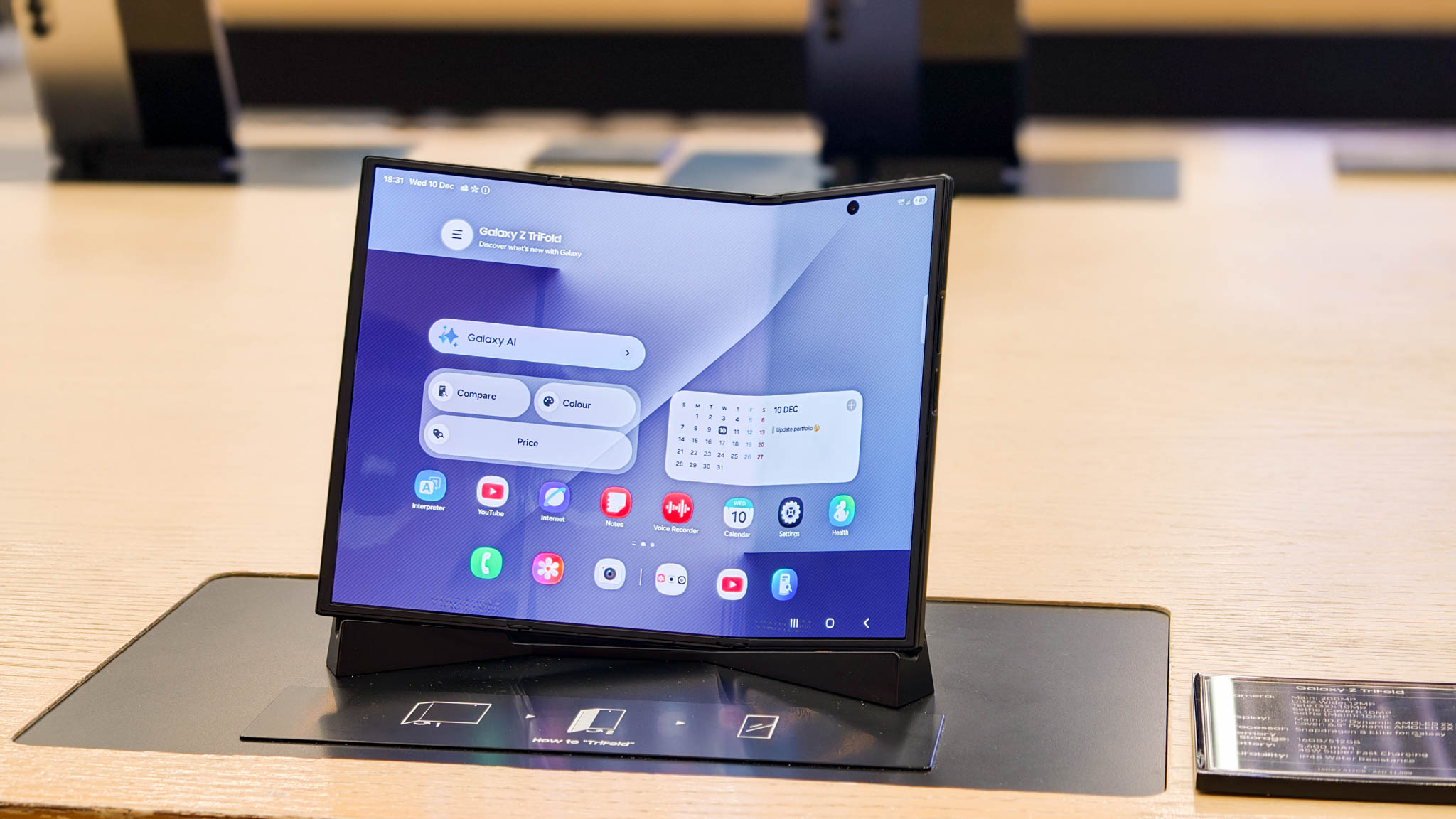Nanoleaf vs. Hue: Smart lighting titans with very different strategies
These two smart lighting innovators are both impressive, just in different ways.
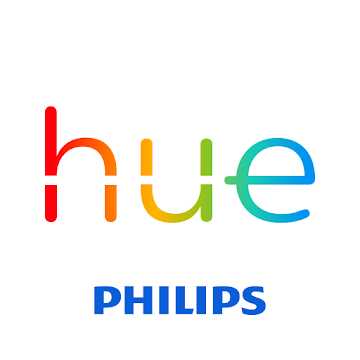
Pros
- A broad ecosystem of devices
- Outdoor lighting options
- Modern-styled lighting fixtures
- The Hue Bridge offers fantastic connectivity
- Cleanly designed app
- Future Matter compatible
Cons
- No wall panel lighting options
- Must use the Bridge to get all smart features

Pros
- Unique wall panel light options
- Fantastic color gradation in all products
- Loads of customization options in the companion app
- Thread compatible
- No hub is required to access all of the features
Cons
- Fewer devices in the Nanoleaf ecosystem
- Odd connectivity restrictions
If you've shopped for smart lights, you have most likely come across Philips Hue for a good reason. This brand was one of the first in the smart lighting space, and it has continued to evolve as technology and trends have changed over the years, with new companies entering the game as well.
Nanoleaf is one of those brands. While not as established as Philips Hue, Nanoleaf has been making some of the most unique and impressive lighting devices for years. But which is best for you will depend on your needs.
Philips Hue vs Nanoleaf: Being the best at what they do
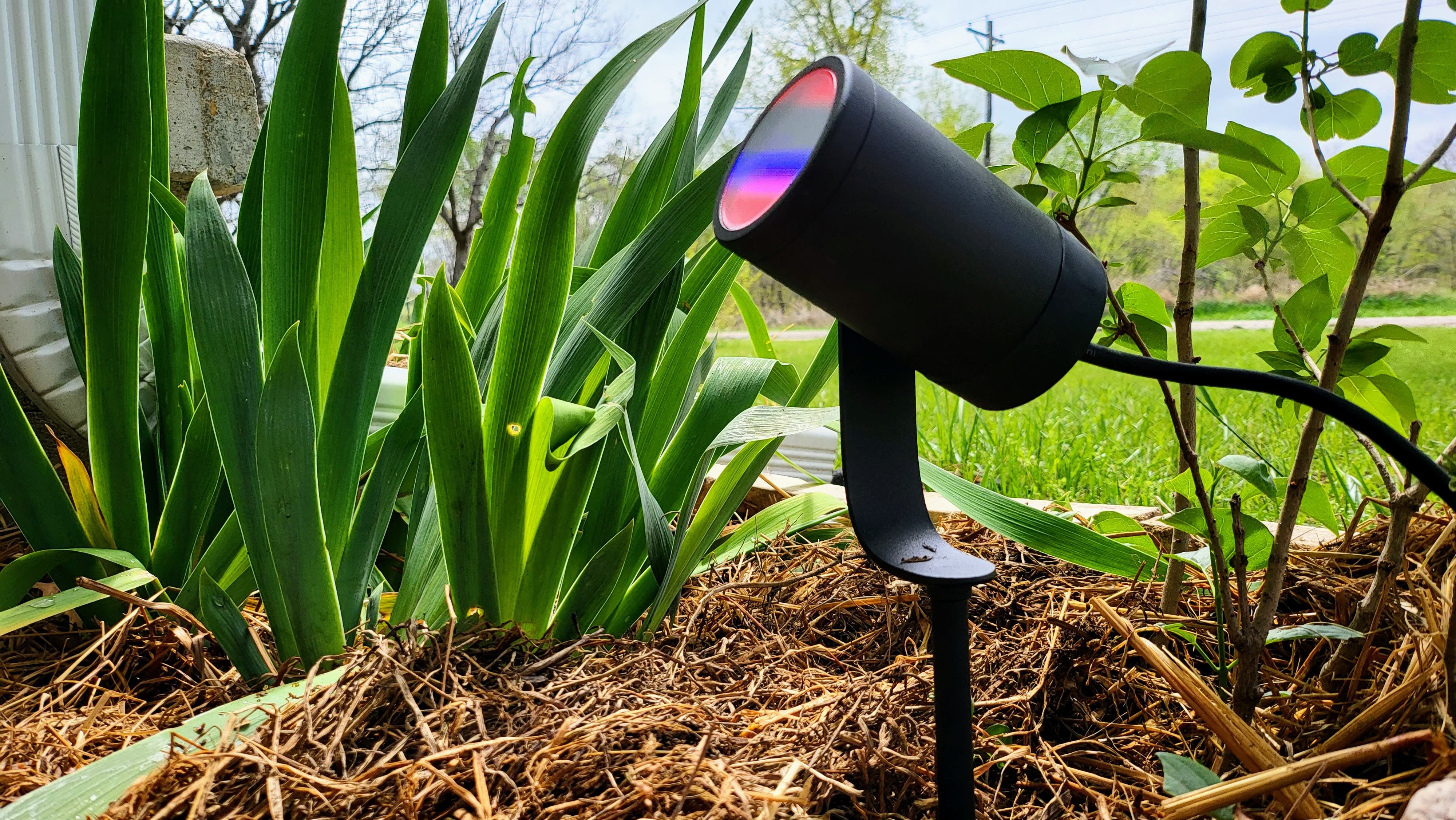
Philips Hue and Nanoleaf both make some of the best smart lights; they just do so differently. Pitting Nanoleaf and Philips Hue against each other is nearly like asking if Tom Brady or Michael Jordan is the greatest American athlete of al time (the GOAAT?). Because while both people are incredible athletes and have accomplished great things, they also played different sports. But it doesn't mean you can't win with either option.
Philips Hue and Nanoleaf are both premiere smart lighting brands that occupy different areas of this category.
Philips Hue offers a vast device ecosystem that includes switches, motion sensors, indoor and outdoor lighting fixtures, bulbs, light strips, and more. All work seamlessly together through the companion app and the Hue Bridge. Well, you don't have to use the bridge but not all Philips Hue lights work without it, and those that do will be very limited in smart features.
Hue's hubless devices can still get some basic smart features. But because the connection is made via Bluetooth, things like controlling them when away from home, working with Hue accessories, and others will be unavailable. So, to get the true Philips Hue experience, you'll want the hub.

The Hue Bridge connects up to 50 of the best Philips Hue devices together and opens up control from anywhere you have an internet connection, accessory controls, and more. It also gives rock solid and fast responses when controlling the lights with your voice from any of the excellent smart speakers on the market or the Philips Hue app.
Instead of using a hub, all of Nanoleaf's fantastic smart lights connect independently via Wi-Fi or Bluetooth, making them some of the best hubless smart lights available. Nanoleaf's Bluetooth devices are part of the Essentials lineup, and functionality will be similar to the Philips Hue Bluetooth-only options.
Get the latest news from Android Central, your trusted companion in the world of Android
While I'm glad I don't have to mess with any additional hardware to use Nanoleaf lights fully, the connectivity isn't quite as reliable as Philips Hue.
But, stepping into the rest of Nanoleaf's lighting catalog is a great mix of unique devices and customization options. While Nanoleaf may not have the sensors, switches, outdoor fixtures, or some of the other "traditional" options that Hue features — it does have mesmerizing wall lighting panels.
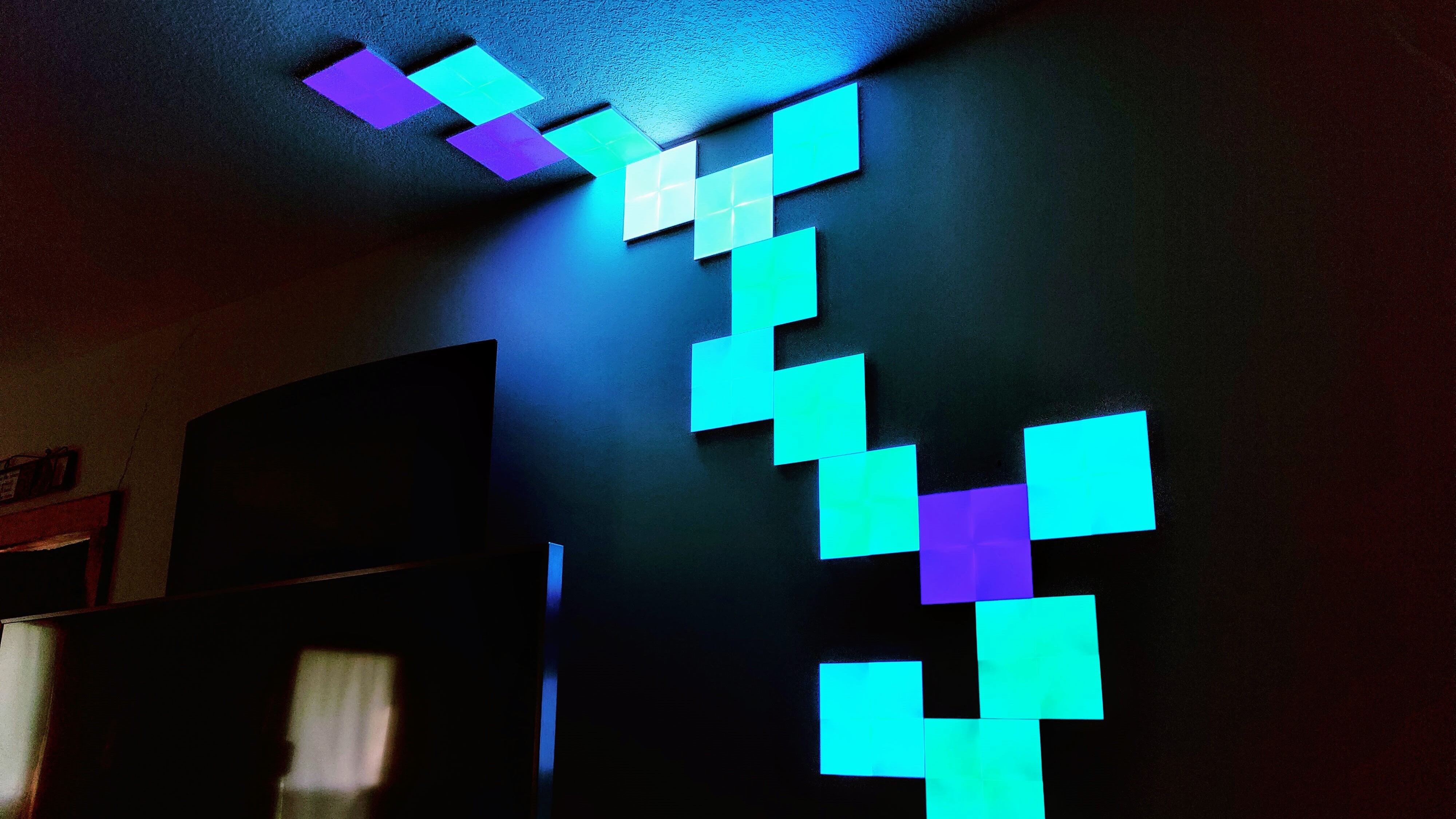
Aside from the unique shapes that Nanoleaf offers in its wall lighting options, the way the light looks and moves within these fixtures is possibly the most impressive. One of the areas I felt that Philips Hue struggled with for a long time was color reproduction and gradients. Recently, it has gotten way better, but Nanoleaf is still ahead.
Whether with the square tiles of the Nanoleaf Canvas or the reflected light of the Nanoleaf Lines, you can rest assured that the colors will be bold, and the transitions between shades will be flawless. Even with the Nanoleaf Elements, the wood-inspired hexagons only offering white color temps, the way it shifts between shades is marvelous. The only other brand that can even come close to challenging Nanoleaf regarding these kinds of transitions is Govee, which I compared previously.
Watching how colors and light move through Nanoleaf's wall panel fixtures is almost magical.
However, if you want to use Nanoleaf lights, you really only have two choices — attach your lights to something, like a wall or ceiling, or a lamp using the Essentials Bulb. Currently, Nanoleaf doesn't offer any lighting fixtures outside of the wall-mountable options, a light strip, or a light bulb. While they have some great options, their lineup doesn't cover the breadth of lighting options that Philips Hue does.
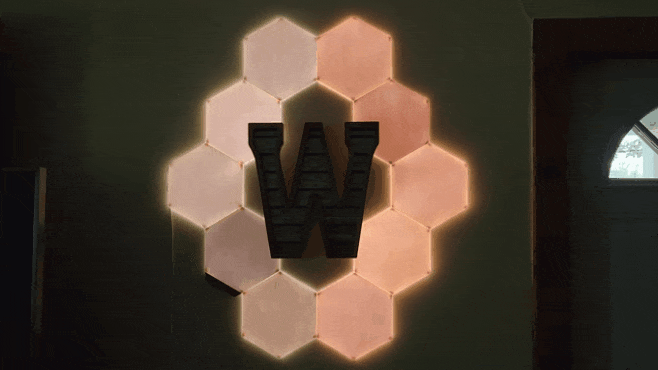
Because of the number and type of devices Philips Hue offers, the hub makes sense to ensure a consistent experience from a connectivity standpoint. As I mentioned earlier, I use devices from both of these brands in my home, and rarely, if ever, do I have connection issues with my Philips Hue devices. Nanoleaf is a bit less reliable.
There have been times when I'll open the Nanoleaf app, and the device will say unreachable. It isn't often, but it isn't very pleasant when it happens. The other annoying thing is that you must be on the same Wi-Fi network in order to control Nanoleaf lights. So, you can't manage your lights when away from home. That is unless you connect them with Google Assistant or Amazon Alexa.
Both Philips Hue and Nanoleaf are compatible with your favorite voice assistants. So whether you use the best Google Assistant speaker or any of the excellent Amazon Alexa devices, you'll have extra lighting control options.
Philips Hue vs Nanoleaf: Common ground
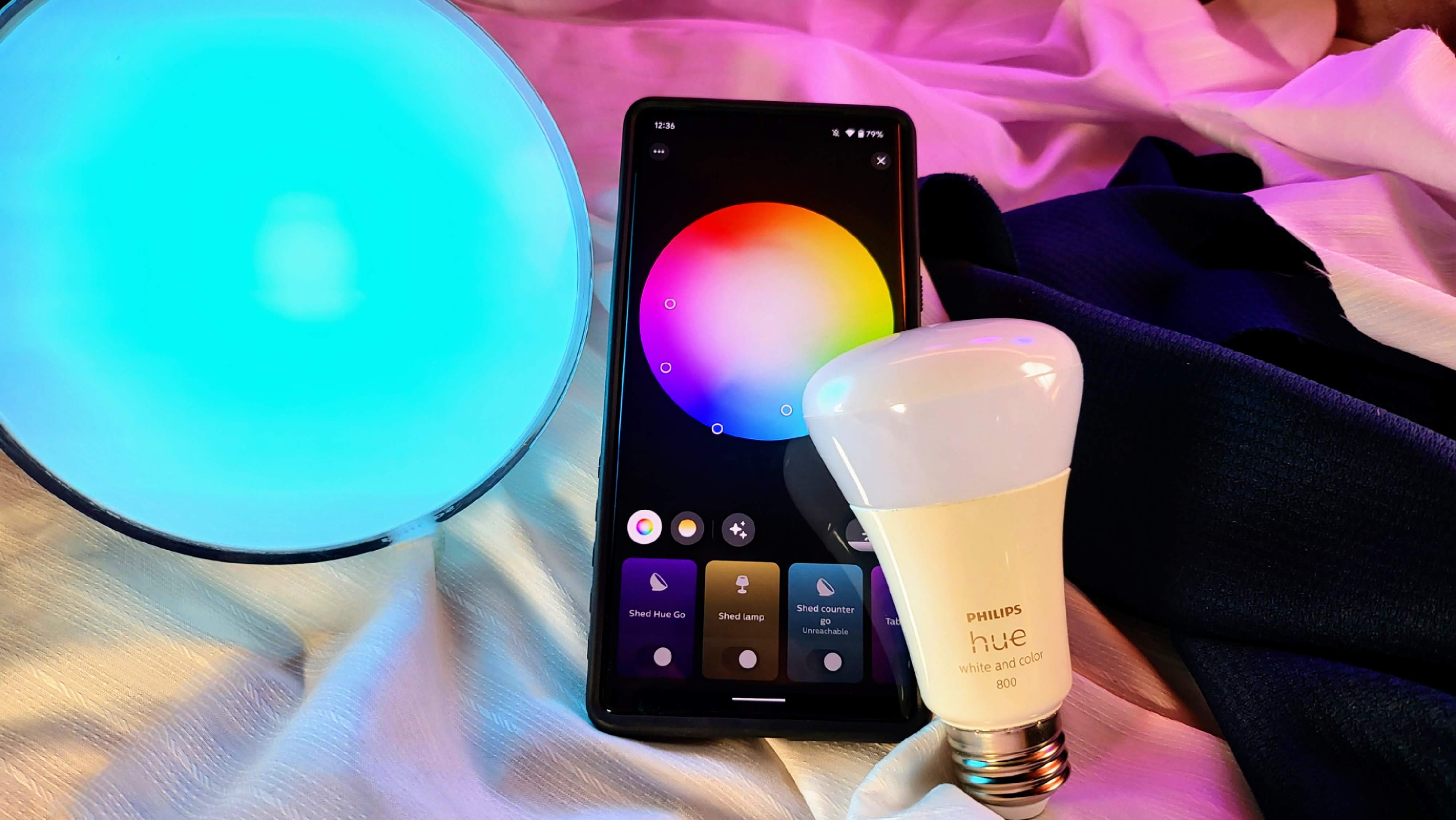
Aside from being compatible with voice assistants, these two brands have other things in common: each has a very good app. But much like we've seen with these brands as a whole, their apps also take very different approaches.
For example, the Philips Hue app is a clean, modern design with a nice flow to the navigation and straightforward controls. You see lighting based on rooms and zones on the app's homepage if you set those up. You can adjust brightness or power the lights on or off from this page. Tapping on the room will take you to a page with all the lights you have assigned to that room. Each individual like can have its settings changed from colors, brightness, or power state.
A good companion app is an essential part of any good smart home device, and both Philips Hue and Nanoleaf have that.
Hue also has a Scene Gallery with preset color combos to create the perfect ambiance. If you don't like what is in the preset gallery, you can also make your own scenes to fit any lighting mood you want. One of the downsides is that the scenes are all static. So if you are using the Philips Hue Signe Lamp and have a color gradient scene on it, those colors won't move from their predetermined section of the lamp. Not a significant issue, but it seems like an obvious function to include.

While Philips Hue does provide some more customization options and automation features in the Labs section, not all work reliably. This is why they are in the Labs area and not in the regular section. When it comes to Nanoleaf's app, it, like Philips Hue, has a well-designed app with modern cues. But because Nanoleaf's lights are physically different and unique compared to Philips Hue, its app leans heavily into customization.
Nanoleaf's homepage lets you choose to create rooms or not. If you put devices into a room in the app, you can control them simultaneously from the homepage Tapping on an app takes you to all of the preset scenes, with nearly all including some form of movement in the colors. In the spirit of customization, Nanoleaf includes a very robust set of tools for creating your own scenes. From colors to lighting transitions, you can do nearly anything.
While Nanoleaf and Philips Hue have great apps, each excels differently — much like their lighting portfolios.
After making a design, you can add it to your list of scenes and share it with the very active community of Nanoleaf owners. The catalog of user-created designs is quite large and covers nearly all devices. You can filter and search for specific types of designs or names. I've even found ones for my favorite sports teams to put on during game time.
Regardless of while lighting brand you go with, you'll get various automation options, from scheduling lights to come on at specific times to adjusting based on the time of day.
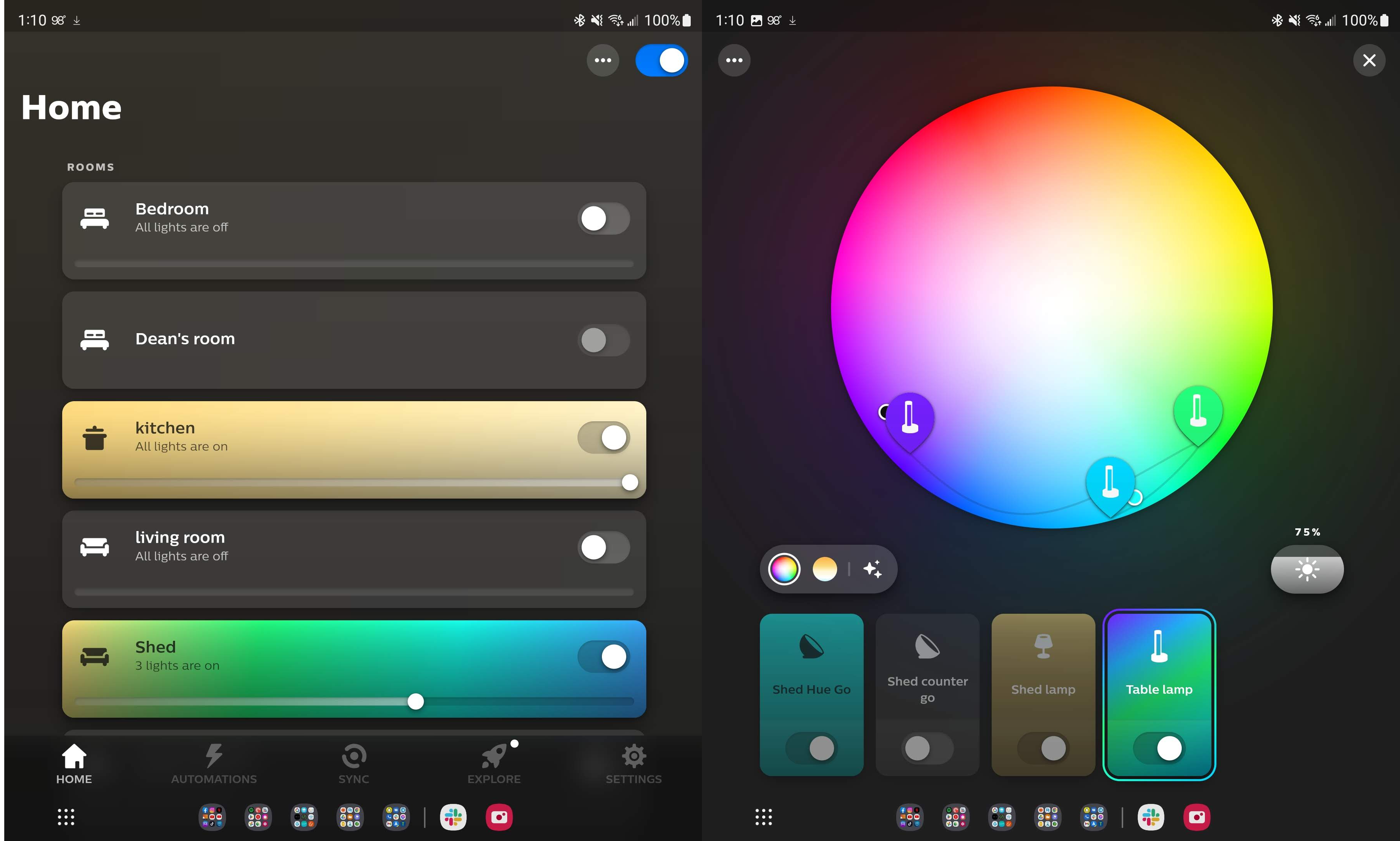

Looking to the future, both are working to implement new technologies to improve their products and the user experience. Philips Hue is readying its products to be compatible with Matter for its release slated later this fall. This new protocol for smart devices is supposed to improve interoperability between devices and brands. However, Thread is not part of Hue's plans as of now.
While Nanoleaf isn't going to work to implement Matter right away, what it does plan to do is continue supporting another new protocol — Thread. Well, Thread isn't really all that new, but it hasn't been until the last couple of years that it really started to pick up. Nanoleaf is taking a slower approach to embracing Matter. We interviewed Nanoleaf CEO Gimmy Chu earlier this year about the subject.
Nanoleaf did respond with a statement on September 26 2022, regarding Matter integration, "Nanoleaf will be announcing a number of new Matter-compatible products alongside the new standard release. We’ve been working very closely with the CSA to achieve this goal. The new Matter-compatible lighting range will help to provide users with bright tunable whites and 16M+ color options for their everyday lighting needs.”
Philips Hue and Nanoleaf are working to improve, including looking at emerging technologies.
Thread and Matter are attempts to improve the smart device experience. How each works is different, and they don't have the exact same premise, but both are attempts at improving the smart device experience. So, it seems only fitting that two brands that offer excellent smart lighting options but differently do the same when it comes to communication protocols.
Philips Hue vs Nanoleaf: Which should you get?
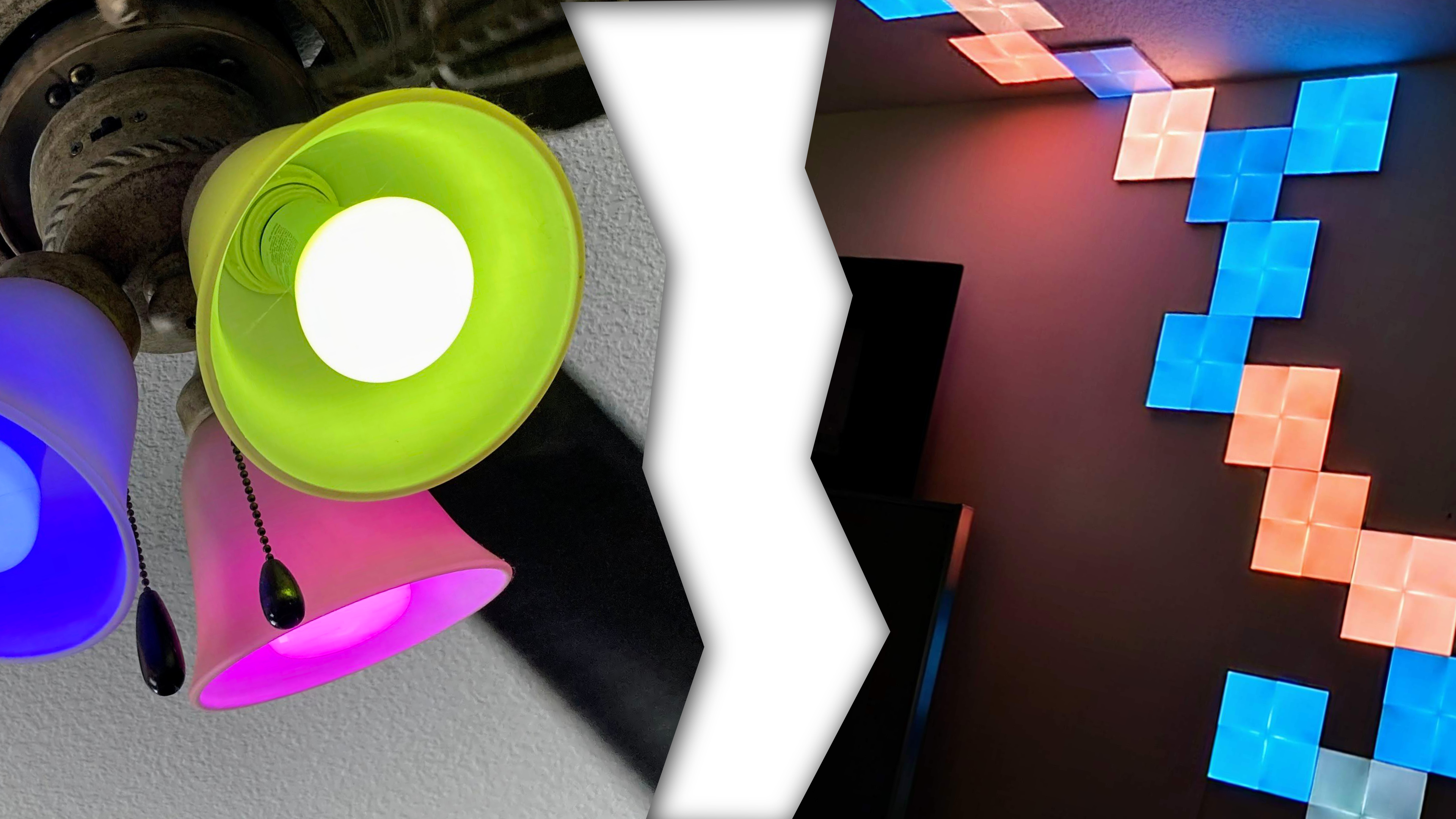
Choosing between these two brands isn't an easy one. You must first consider what features you want and your lighting needs. Yes, Philips Hue and Nanoleaf will both make a room less dark and let you control their lights with your phone or voice. But, as you might have guessed was coming, they do so very differently.
If you are looking for room lighting that doubles as a wall accent piece, Nanoleaf is the way to go. With the variety of lighting options and the customizations available, it's tough to go wrong with Nanoleaf. But you won't get as consistent connectivity, an ecosystem of devices like switches and sensors, or my traditional lighting fixtures to pick from. But you get unique lights, amazing color and lighting experience, and unmatched customization options.

On the other hand, Philips Hue has sensors and switches, reliable connectivity, and traditional lighting fixtures. But Hue lacks some of the excitement Nanoleaf offers in its app and lighting options. Philips Hue Go, Iris, Play Bars, Signe lamps, and Play HDMI Sync box for syncing with your TV all offer some non-traditional lighting options but aren't as engaging as what Nanoleaf has.
Philips Hue and Nanoleaf offer smart lighting at levels many other brands don't. But you don't have to pick just one. As I mentioned, I use both in my home. I love the look that wall panel lighting offers and the customization from Nanoleaf. But I also love the consistent connectivity and wide range of devices for Philips Hue. So, why not both?
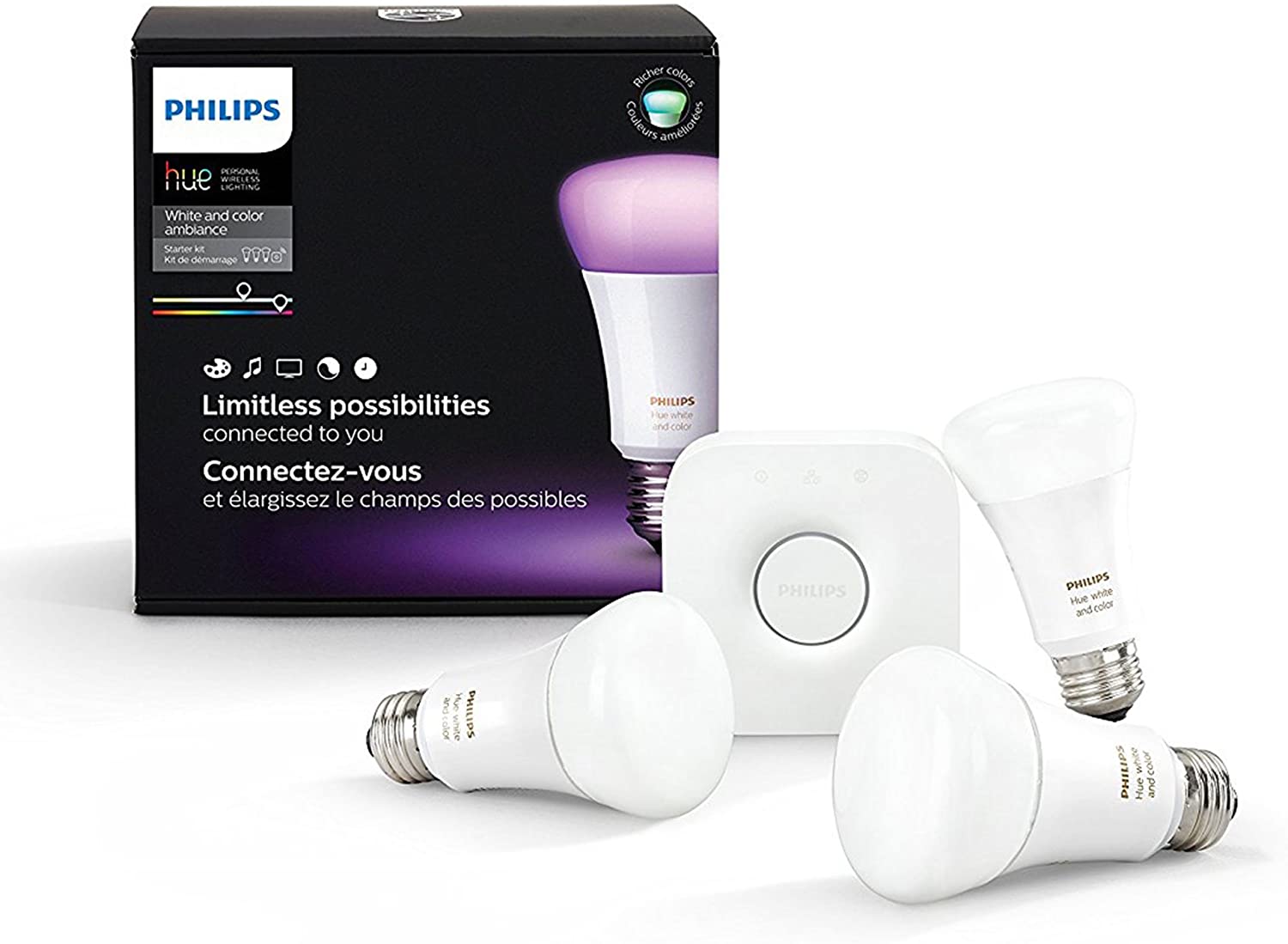
Picking up a starter kit from Philips Hue like this one is a great way to get started in the ecosystem. Because it not only gets you the bulbs, but also the Hue Bridge so you get the most from your new lights right away.
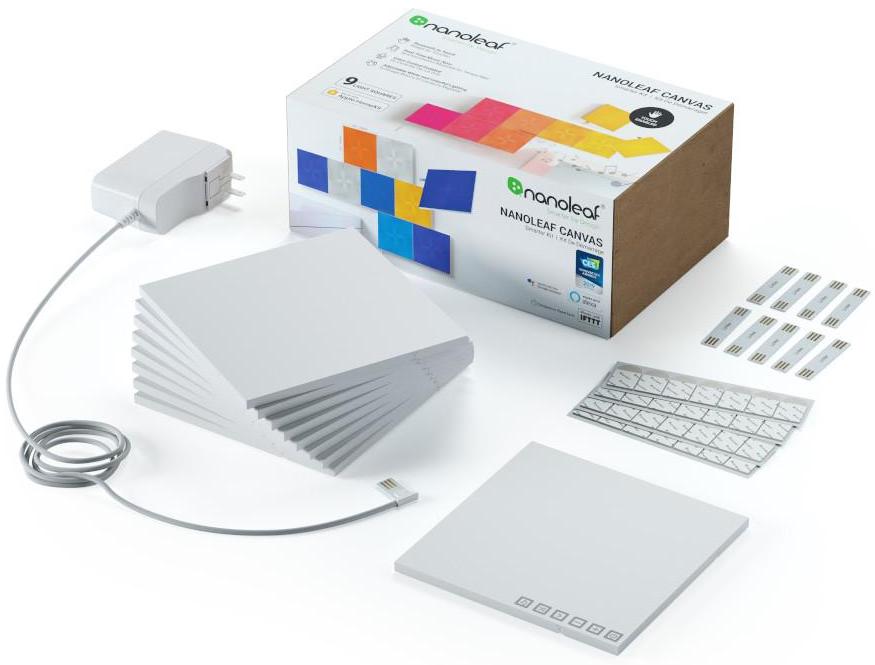
Nanoleaf Canvas may have a square shape, but it isn't a square. The tiled appearance creates a unique lighting experience as colors flows across panels. Not only can you control these lights with an app and by voice, but also through touch.

